Related Research Articles
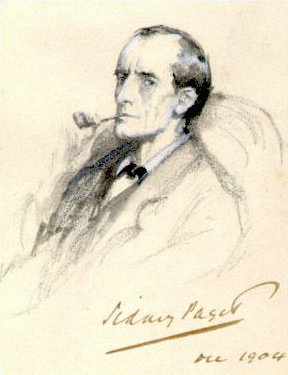
Sherlock Holmes is a fictional detective created by British author Arthur Conan Doyle. Referring to himself as a "consulting detective" in the stories, Holmes is known for his proficiency with observation, deduction, forensic science and logical reasoning that borders on the fantastic, which he employs when investigating cases for a wide variety of clients, including Scotland Yard.
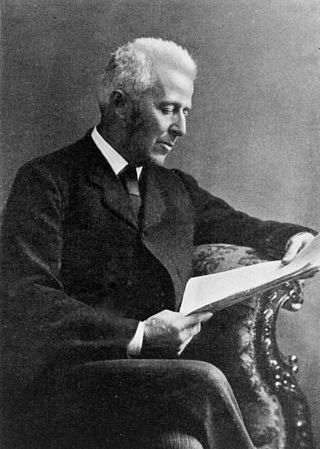
Joseph Bell FRCSE was a Scottish surgeon and lecturer at the medical school of the University of Edinburgh in the 19th century. He is best known as an inspiration for the literary character, Sherlock Holmes.
In abstract algebra, the algebra of hyperbolic quaternions is a nonassociative algebra over the real numbers with elements of the form

The Valley of Fear is the fourth and final Sherlock Holmes novel by British writer Arthur Conan Doyle. It is loosely based on the Molly Maguires and Pinkerton agent James McParland. The story was first published in the Strand Magazine between September 1914 and May 1915. The first book edition was copyrighted in 1914, and it was first published by George H. Doran Company in New York on 27 February 1915, and illustrated by Arthur I. Keller.

Detective Inspector G. Lestrade, or Mr. Lestrade, is a fictional character appearing in several of the Sherlock Holmes stories written by Arthur Conan Doyle. Lestrade's first appearance was in the first Sherlock Holmes story, the novel A Study in Scarlet, which was published in 1887. The last story in which he appears is the short story "The Adventure of the Three Garridebs", which was first published in 1924 and was included in the final collection of Sherlock Holmes stories by Doyle, The Case-Book of Sherlock Holmes.
Alexander McAulay was the first professor of mathematics and physics at the University of Tasmania, Hobart, Tasmania. He was also a proponent of dual quaternions, which he termed "octonions" or "Clifford biquaternions".

The Baker Street Irregulars is an organization of Sherlock Holmes enthusiasts founded in 1934 by Christopher Morley. As of 2015, the nonprofit organization had about 300 members worldwide.
Richard Gordon Lancelyn Green was a British scholar of Arthur Conan Doyle and Sherlock Holmes, and was generally considered the world's foremost scholar of these topics.
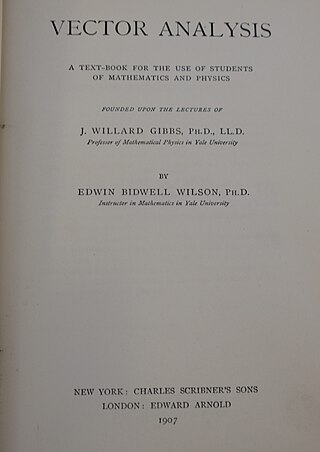
Vector Analysis is a textbook by Edwin Bidwell Wilson, first published in 1901 and based on the lectures that Josiah Willard Gibbs had delivered on the subject at Yale University. The book did much to standardize the notation and vocabulary of three-dimensional linear algebra and vector calculus, as used by physicists and mathematicians. It was reprinted by Yale in 1913, 1916, 1922, 1925, 1929, 1931, and 1943. The work is now in the public domain. It was reprinted by Dover Publications in 1960.

A History of Vector Analysis (1967) is a book on the history of vector analysis by Michael J. Crowe, originally published by the University of Notre Dame Press. As a scholarly treatment of a reformation in technical communication, the text is a contribution to the history of science. In 2002, Crowe gave a talk summarizing the book, including an entertaining introduction in which he covered its publication history and related the award of a Jean Scott prize of $4000. Crowe had entered the book in a competition for "a study on the history of complex and hypercomplex numbers" twenty-five years after his book was first published.
The Quaternion Society was a scientific society, self-described as an "International Association for Promoting the Study of Quaternions and Allied Systems of Mathematics". At its peak it consisted of about 60 mathematicians spread throughout the academic world that were experimenting with quaternions and other hypercomplex number systems. The group's guiding light was Alexander Macfarlane who served as its secretary initially, and became president in 1909. The association published a Bibliography in 1904 and a Bulletin from 1900 to 1913.

Sir Arthur Ignatius Conan Doyle was a British writer and physician. He created the character Sherlock Holmes in 1887 for A Study in Scarlet, the first of four novels and fifty-six short stories about Holmes and Dr. Watson. The Sherlock Holmes stories are milestones in the field of crime fiction.

Young Sherlock Holmes: Death Cloud is the first novel in the Young Sherlock Holmes series that depicts Arthur Conan Doyle's detective Sherlock Holmes as a teenager in the 1860s and 70s. It was written by Andrew Lane and released in the UK on June 4, 2010 by Macmillan Books.

Arthur Conan Doyle KStJ, DL (1859–1930) was a Scottish writer and physician. In addition to the series of stories chronicling the activities of Sherlock Holmes and his friend Dr John Watson for which he is well known, Doyle wrote on a wide range of topics, both fictional and non-fictional. In 1876 Doyle entered the University of Edinburgh Medical School, where he became a pupil of Joseph Bell, whose deductive processes impressed his pupil so much that the teacher became the chief model for Holmes. Doyle began writing while still a student, and in October 1879 he had his first work—"The Mystery of the Sasassa Valley"—published in Chambers's Journal. He continued writing short works—both fictional and non-fictional—throughout his career, and had over 200 stories and articles published.
Young Sherlock Holmes is a series of young adult thriller novels by British author Andrew Lane featuring Arthur Conan Doyle's detective Sherlock Holmes as a teenager in the 1860s and 70s that is faced with numerous mysteries, crimes and adventures throughout the series.
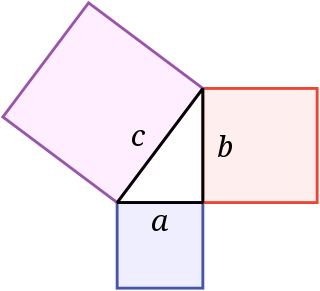
Gauss's Pythagorean right triangle proposal is an idea attributed to Carl Friedrich Gauss for a method to signal extraterrestrial beings by constructing an immense right triangle and three squares on the surface of the Earth. The shapes would be a symbolic representation of the Pythagorean theorem, large enough to be seen from the Moon or Mars.
Young Sherlock Holmes: Fire Storm is the fourth novel in the Young Sherlock Holmes series. It was written by Andy Lane and released in 2011.

Mycroft and Sherlock is a mystery novel by Kareem Abdul-Jabbar and Anna Waterhouse. It is the second novel in their "Mycroft Holmes" series utilizing Sir Arthur Conan Doyle's characters of Mycroft and Sherlock Holmes. Having focused solely on Mycroft in the first novel, Abdul-Jabbar and Waterhouse were curious about the relationship between Mycroft and his brother and recognized that the sequel would need the introduction of Sherlock.
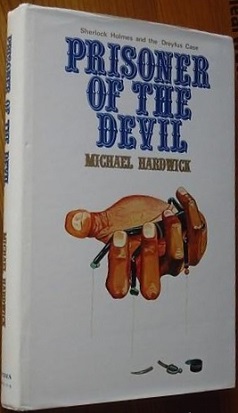
The Prisoner of the Devil is a Sherlock Holmes pastiche novel by Michael Hardwick, originally published in 1979.
References
- ↑ Michael Crowe: Rev. John J. Cavanaugh, C.S.C. Professor Emeritus in the Humanities Program of Liberal Studies University of Notre Dame: John J. Reilly Center
- ↑ Michael J. Crowe, A History of Vector Analysis Review by William C. Waterhouse, Bulletin of the American Mathematical Society, vol. 78, no. 3, May 1972
- ↑ p. 12 of Michael J. Crowe, 'A History of Vector Analysis' (talk at University of Louisville, 2002)
- ↑ Michael J. Crowe, A History of Vector Analysis, review by P. N. Ruane, MAA Reviews, 14 April 2012
- ↑ Dissertation: The history of the idea of a vectorial system to 1910 by Michael J. Crowe, University of Wisconsin, 1965
- ↑ WorldCat, Michael J. Crowe
- ↑ Michael J. Crowe, Gestalt shift in Conan Doyle's Sherlock Holmes stories, review by Bernard Lightman in Isis, vol. 110, no. 4, pp. 846-847, 2019
- ↑ Michael J. Crowe, The Extraterrestrial Life Debate, 1750-1900, review by David W. Hughes in New Scientist, 2 October 1986, p. 50
- ↑ Michael J. Crowe, The Extraterrestrial Life Debate, 1750-1900, review by Steven J. Dick in Isis, vol. 78, no. 2, pp. 257-259, 1987
- ↑ Michael J. Crowe Awarded the 2010 LeRoy E. Doggett Prize by Sara J. Schechner, Historical Astronomy Division of the American Astronomical Society